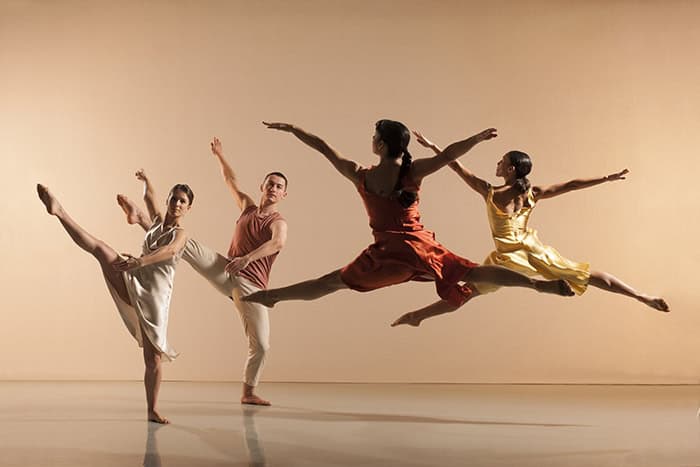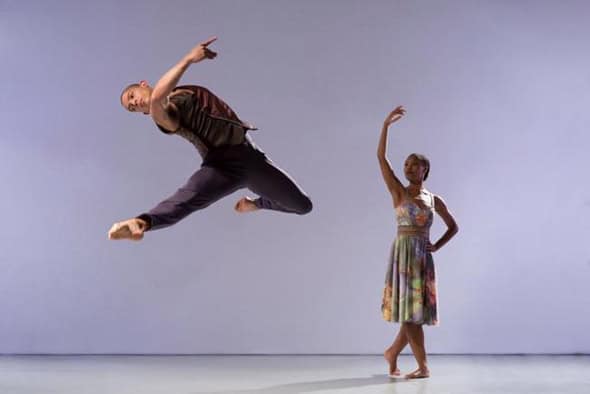Richard Alston Dance Company, Final Edition at Sadler’s Wells
Posted: April 4th, 2020 | Author: Nicholas Minns & Caterina Albano | Filed under: Performance | Tags: Alejandra Gissler, Belinda Quirey, Ellen Yilma, Elly Braund, Final Edition, Jason Ridgway, Jason Tucker, Jennifer Hayes, Joshua Harriette, Katherine McIndoe, Martin Lawrance, Monique Jonas, Nahum McLean, Niall Egan, Nicholas Shikkis, Peter Todd, Richard Alston, Zeynep Kepekli | Comments Off on Richard Alston Dance Company, Final Edition at Sadler’s WellsRichard Alston Dance Company, Final Edition, Sadler’s Wells, March 7 & 8

It is perhaps too soon and too delicate to unpick the accumulation of political and economic decisions that have led to the premature closing of such a renowned cultural entity as Richard Alston Dance Company. Alston has known for the past two years that ‘my Company simply could not continue beyond this Spring’, and for someone who admits to have been ‘entirely lacking in any sort of strategic plan’ over his fifty-year choreographic career, he has managed to end with remarkable prescience. The latest run of performances has finished just one week before Sadler’s Wells closure for (at least) the next three months to comply with the government’s guidance on containing the coronavirus pandemic. In the current climate, Alston’s company may well feel relieved that its calendar of adieux has been able to run its course and finish in style; if there is such a thing as a good death, this is it. For Alston, however, there is no intimation of mortality; on the contrary, in the last two years he has created some of his best work and has built his company to technical and expressive heights.
This Final Edition is the last of several national and international performances by the company; the choice of program is as much a retrospective as a statement of current form. The earliest work is Isthmus from 2012 to the music of Jo Condo, followed by Mazur from 2015 to Chopin mazurkas played on stage by long-time collaborator, Jason Ridgway. Two younger recruits to the company, Joshua Harriette and Nicholas Shikkis, get inside the music and its relationship to the choreography to create an emotional portrait of elegance and close friendship. Three works on the program date from the past tumultuous year: Bari for the graduating students of Alston’s alma mater, London Contemporary Dance School, Voices and Light Footsteps and Shine On. First performed by the students at the Alston At Home program at The Place, Bari is inspired by the pizzica music of the Puglia region in southern Italy. Alston’s mastery of form and pattern partners the liveliness of the musical rhythms to create a gem of choreographic construction — not so much a translation of the traditional pizzica dance as a transposition of the earthiness in the music. Music has always been the motivation for Alston’s choreography, the source from which both the rhythm and the style of his movement arise. In Shine On, he returns to one of his favourite composers, Benjamin Britten, for the collection of songs On This Island set to five of WH Auden’s poems; they are sung by Katherine McIndoe accompanied by Ridgway. Alston enters the work through Britten’s joyous opening fanfare, but Auden’s pessimism casts a long shadow that Alston — as well as lighting designer Zeynep Kepekli — alternately rejects and absorbs, most poignantly in the central Nocturne where Niall Egan and Harriette express the pain of a love that must remain in the shadows. After this vein of darkness, Martin Lawrance steps in with his own contribution, A Far Cry, set to the elegiac Introduction and Allegro for Strings by Sir Edward Elgar. It is in effect a paean to Alston from the opening fanfare to its triumphant coda, embracing elements of his style within Lawrance’s own characteristic rush of energy. In the ecstatic entrances and exits there is a sense of a continuation well beyond the stage, embracing all that has gone before and all that is yet to come.
In the final work, Voices and Light Footsteps, Alston transcends any sense of darkness by returning to another of his favourite composers, Claudio Monteverdi, and through the music to the early seventeenth century period in which he lived. Not only are there traces of courtly Renaissance dance in the work (it is dedicated to the memory of Alston’s historical dance teacher, Belinda Quirey), but emotions and virtues that have supported him through difficult times appear to be subtly embedded in the choreography. Each member of the company has their own light and colour but their individuality is sublimated to the harmony of the whole. Voices and Light Footsteps is spiritually uplifting and visually stunning, with costumes by Peter Todd under lighting by Lawrance; its central duet, danced on alternate nights by Monique Jonas and Elly Braund with Shikkis, is its crowning achievement. The work ends, significantly, with Monteverdi’s Damigella Tutta Bella, which Alston notes ‘is the earliest music I can remember hopping around to as a small boy.’ TS Eliot could have written the epitaph with the last line of East Coker: ‘In my end is my beginning.’
Dancers in Richard Alston Dance Company for this Final Edition: Elly Braund, Niall Egan, Alejandra Gissler, Joshua Harriette, Jennifer Hayes, Monique Jonas, Nahum McLean, Nicholas Shikkis, Jason Tucker and Ellen Yilma.
